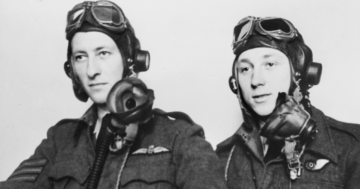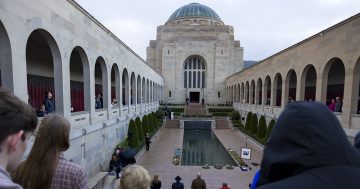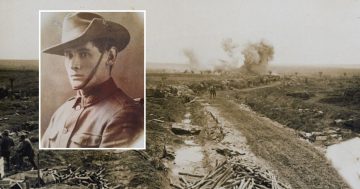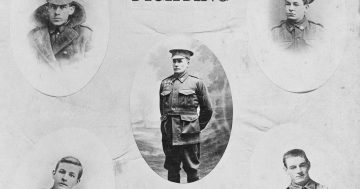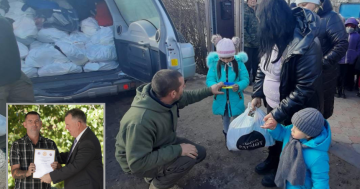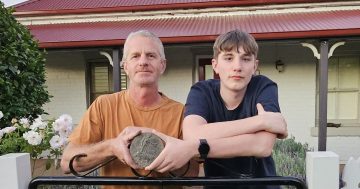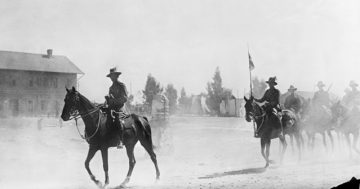
Former Warburn resident Pilot Officer John Dickie has been honoured for his service during World War II by the Australian War Memorial. Photo: Supplied.
Former Warburn resident Pilot Officer John Dickie’s service and sacrifice during World War II was honoured during the 26 November Last Post Ceremony at the Australian War Memorial.
The Last Post Ceremony is held each day at the Australian War Memorial. Each service honours one of the 103,000 names on the Roll of Honour by inviting families of the servicemen to attend and share their stories.
This week, Pilot Officer John Dickie was selected with his stories of valour, which include operations where he flew a Short Stirling Mark Four bomber over Norway to resupply resistance groups.
John enlisted in the Royal Australian Air Force on 9 November 1941, following in the footsteps of his older brother, William, who had enlisted just a month earlier.
Over the course of 1944, John flew multiple missions with No. 299 Squadron, flying the Short Stirling Mark Four bomber, known as the ‘cloak and dagger Stirling’.
John lost his life on 26 November 1944 during one of these missions when his aircraft crashed into the sea off the Norwegian Coast. He was 26.
“Known to his family as Jack, John Dickie was born in Glasgow, Scotland, on 16 July 1918,” Australian War Memorial historian Michael Kelly said.
“By the mid-1920s, the family had moved to Warburn, near Griffith, where young Jack Dickie attended Griffith High School before going on to attend the Gordon Institute in Geelong.
“These operations proved to be increasingly hazardous for Dickie and his crew. Multiple times their aircraft sustained damage and still returned home.”
Dickie’s great niece, Erin Pitt, attended the Last Post Ceremony on Thursday. Ms Pitt said having Jack honoured meant the world to the Dickie family.
“The news of my great uncle Jack being missing in action was incredibly traumatic on the family,” she said.
“The Last Post Ceremony honouring Jack means the world to the Dickie family, 81 years on from his passing. The ceremony allows us to both honour his service and celebrate his life.”
Memorial Director Matt Anderson said The Last Post Ceremony was a commitment from the Australian War Memorial to honour the legacy of Australian service.
“Through our daily Last Post Ceremony, we not only acknowledge where and how these men and women died,” he said.
“We also tell the stories of who they were when they were alive, and of the families who loved and, in so many cases, still mourn for them.
“The Last Post is now associated with remembrance, but originally it was a bugle call to sound the end of the day’s activities in the military. It is a fitting way to end each day at the memorial.”
The Last Post Ceremony honouring the service of Pilot Officer John Dickie can be viewed on YouTube here.







